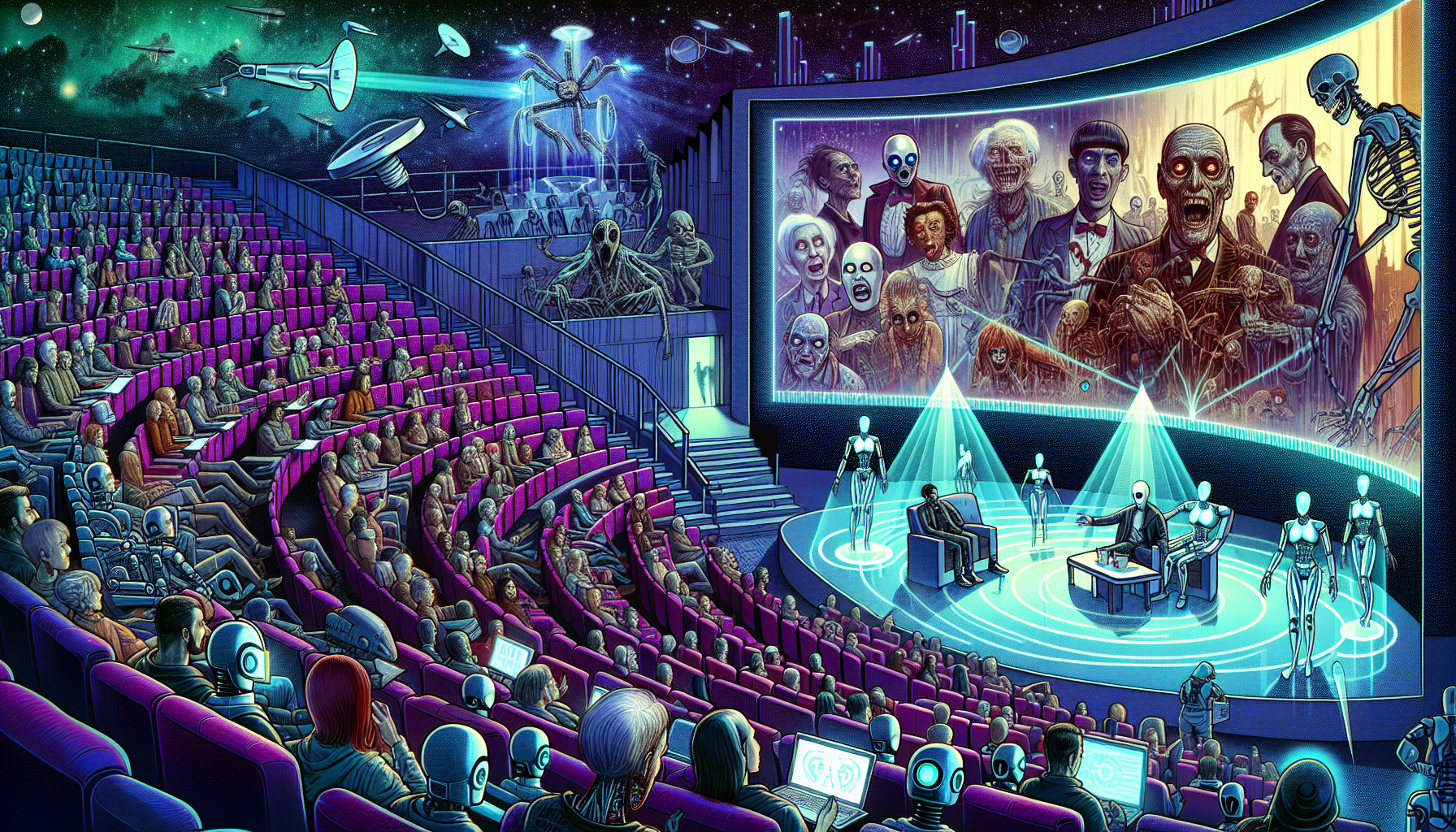
Welcome to the Frightfest: Peeking Into the Crystal Skull of Horror Cinema
Oh, horror, you delightful alchemy of dread and exhilaration—you’ve kept us peeking through our fingers for decades. But what uncanny territories are you slithering into now, you shape-shifting beastie of a genre? As we cast our gaze into horror’s glowing eyes, let’s see how it’s morphing and what this means for you crafty screenwriters and thrill-mongers.
Horror Gets Tech-Savvy: A New Arena
First up, let’s squizzle at technology. Vamping up with virtual reality (VR) and augmented reality (AR), horror’s not just knocking on your door—it’s in your living room, and it’s wearing your dad’s shoes. VR horror experiences are all the rage among those who like their scares served ice cold and up-close. For writers, the jump from screenplays to VR storyboarding signals a bonanza of new techniques to fry your audiences’ nerves. So, sharpen those pencils – or rather, update your software – because it’s writing, but not as we know it.
The AR Twist: Boo! I’m in Your Phone!
With AR, imagine ghost tales where specters actually creep out of your wallpaper, or zombie hands claw up from your dinner plate. Screenwriters, here’s your cue to morph into tech wizards—collaborating with app developers to craft narratives that aren’t just watched but intensely experienced.
The Rise of Socially Aware Scarefare
Jump scares are great, but guess what’s even juicier? Context. Modern horror is dancing a delicate tango with societal issues. Films like Get Out and The Invisible Man have brilliantly woven racism and domestic abuse respectively into their narratives, making them not only terrifying but profoundly unsettling reflections of reality. This trend is candy in a wrapper for writers looking to combine a love for horror with razor-sharp commentary on the zeitgeist. It’s not just about a masked slayer hunting down teens anymore—it’s why he’s doing it and what that says about us.
The Sub-genre Salad
Horror lovers used to be like kids picking their favorite flavor of ice cream—slow churned supernatural, crunchy creature feature, or a scoop of psychological with nuts. Now, we’re in the era of mix-your-own. The lines are blurring. Romantic horror? Check. Sci-fi horror comedy? Double check. Screenwriters, the playground is ripe for invention. Bash those genres together and see what creepy, hilarious, or bizarre offspring you can create.
Fear Goes Worldwide: International Horrors
Globetrotters, rejoice! Horror is stamping its eerie passport all over the map. With streaming services snatching up frights from around the globe, audiences are getting a taste for scares with different seasonings. South Korea, Japan, Latin America, and more are contributing their unique cultural fears to a hungry global audience. This international house of horrors is a fantastic opportunity for screenwriters to explore diverse folklore and traditions—translating them into tales that chill everyone to the bone, regardless of geography.
Learning from the Masters
And let’s not forget the burgeoning trend of masterclasses and workshops being offered by the giants of the genre. Want to learn how to orchestrate suspense like Hitchcock or construct a narrative like Jordan Peele? There are more opportunities than ever to learn from the best, then twist those teachings into your own brand of nightmare fuel.
The Digital Cauldron: Streaming and Binge-Watching
The horror series is another beastly mutation that’s worth a snicker. Thanks to platforms like Netflix and Amazon, horror has moved from one-night stands to full-blown relationships, with audiences binge-watching entire series in one spooky sitting. Screenwriters, this means more space to develop your characters and plot. Think about pacing, crescendoes, and how your horror can burrow deeper into the psyche over several hours, rather than just ninety minutes of shrieking.
The Undying Sequel Phenomenon
Of course, it wouldn’t be a horror gathering without mentioning the relentless pursuit of sequels. Love them or loathe them, they’re a vital part of the scream scene. They allow writers to explore characters or themes with a depth that just wasn’t possible before. Also, who doesn’t want to see their favorite villain back in action? More gruesome, more cunning, and sometimes with a better hairstylist.
There you have it, fright fans. Horror cinema is not just surviving; it’s thriving, mutating, and invading new spaces like a literary The Thing. So, saddle up your broomsticks, harness your nightmares, and let those creepy creativities flow. The world is, quite literally, dying to see what you come up with next.






